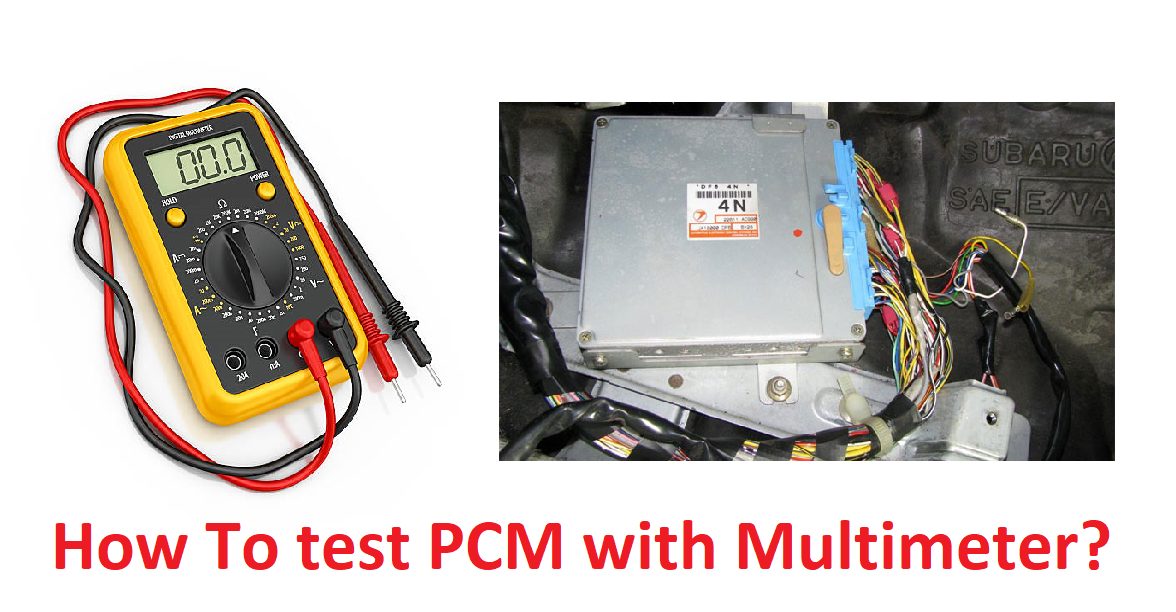PCM (Powertrain control module) also known as ignition control module (ICM) and engine control module (ECM). The PCM module is used to turn on and off the ignition system. This sensor transmits the signals to PCM to boost the ignition coil which generates the power for the spark plug.
It means the spark plug must be good enough to generate sufficient current to fuel the ignition process. If the sparkplug is not working properly one reason can be defective PCM. So it is important to test PCM or an ignition control module with a multimeter.
How do I know if my powertrain control module is bad?
These are the symptoms of bad PCM
- Car starting Problem
- Fuel Consumption increases
- PCM-Related Error Code
- Weak battery
- Engine Stutters
- Worn out tires
If you are facing any of the above-mentioned problems. Must check test PCM on a ford.
How to Test PCM Module?
To test the PCM module with a multimeter follow these steps.
1. Get the appropriate tools

Before checking the PCM make sure you have all the necessary tools. These are important in engine control module testing.
- Multimeter
- Screwdriver
- PCM
If you have this equipment then move to the next stage of testing.
2. Check For Loose connection and Rust
Sometimes PCM is not working properly because of loose connections and rust. So remove the PCM from the battery clean the rust and make the connections tight.
3. Check the battery

Check the battery with Multimeter. Because of low or down battery, PCM is not working properly. So check the voltage of the battery with a multimeter. when the engine will be in running condition voltage will be around 13.7V while in off condition voltage must be 12V.
If the voltages of the battery are low then try recharging it.
How to Test an AVR with Multimeter
4. Use OBD Code Scanner
If there is no rust or loose connection and the battery is fully charged. Connect the OBD code scanner to check if the PCM is giving any error code. This will help you to solve both electrical and mechanical issues. You can compare these codes with a codebook and find out the causes of failure.
5. Check the sensor and wiring
Check for sensors and wires attached to the PCM. From code generated by OBD code, you will get which sensors are connected to the Powertrain control module. Now also check the ground wire connections with the multimeter.
6. Use new PCM
If PCM is still creating a problem for you then you need to replace it with a new one.
We have tried to write everything about how to test PCM with a multimeter and will look for more methods and try to add those in the next update. Did you find this helpful? Let us know in the comment below
Frequently Asked Questions
How can I test my PCM?
To test the PCM first check for loose connection and rust. Now check the battery voltage which must be greater than 13.6 volts when the engine is on and 12V when the engine is off. Now check for sensors and wire connected to the PCM. If everything is fine you need to replace PCM.
What causes PCM failure?
The causes of PCM failure are thermal stress due to excessive heat and excessive vibration that causes sensitive parts to fail. Also, rust and sparking due to loose connections can damage the PCM.
Where is the PCM relay located?
The relay of PCM is located at the engine main fuse relay control box. The relay can be removed from the control box by pulling it up and out of the socket.
How do you reset a PCM?
To reset the PCM follow these steps
- Press and hold the PCM info button for 10 seconds until the PCM reboots.
- Go to PCM CAR and select OPTION
- Now, click on Set PCM System
- Also, Select Reset PCM then select Vehicle Handover.
- It will ask for confirmation two times and select Yes.

